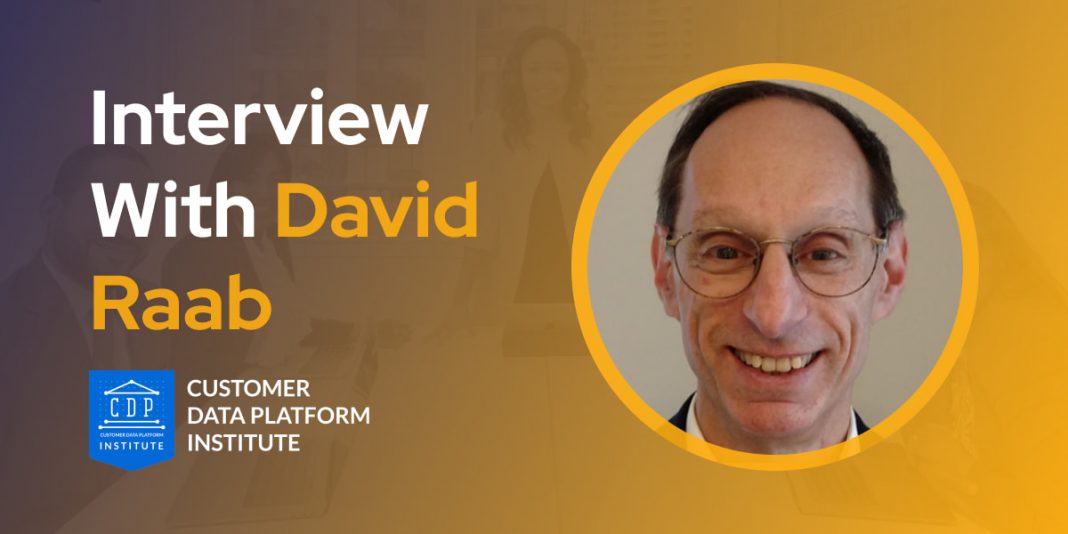Hi David, tell us about yourself and your background.
I started my career as a direct marketer in magazine circulation. That means I was running a subscription business well before ‘software as a service’ and doing the kinds of analysis that today is common when analyzing online advertising results. After that, I became a consultant specializing in marketing technology selection, both of service agencies and software. Part of that work involved tracking and writing about new systems, and one result was that I named the Customer Data Platform category in 2013. When that category took off, I started the Customer Data Platform Institute, whose mission is to help companies do a better job with their customer data. I’ve been running the CDP Institute full-time since 2016.
What is the biggest misunderstanding about customer experience, in your opinion?
The biggest misunderstanding is that CX involves only customer service, which is an older use of the term. There’s a similar misunderstanding among marketers, who sometimes think CX applies only to marketing efforts. Today we recognize that the customer experience includes every interaction between a brand and a customer, from initial advertising through product use and even disposal. This broader understanding implies that CX involves everyone in the company.
What are some of the newer CX companies/solutions you’re keeping your eyes on right now
?I’m intrigued by the chatbot world, with companies like Drift and Ada. Companies tend to like chatbots more than consumers because of the cost savings vs. live agents. So I’m waiting to see which chatbot vendors will be able to make it easy to create chatbots that really give consumers a satisfactory experience. If that does happen, it will truly revolution CX because almost every interaction can become interactive rather than one-way.
David’s tips for improved customer loyalty
What can companies do to improve customer loyalty and retention?
Surveys on this are remarkably consistent. Customers care the most about price and quality, so it’s essential that these be first-rate. But, in practice, it’s hard to differentiate on those because customers have a hard time understanding subtle product differences, and no one wants to compete primarily on price. So you find yourself competing on the third most important variable, which is the quality of customer experience. This translates largely to convenience and ease of use. It’s what has made Amazon so successful, even beyond its ability to offer the best prices. Consumer loyalty is very fragile today because it is so easy to switch to new suppliers. That makes it even more important to differentiate by having consistently excellent experiences across all channels and stages of the customer lifecycle.
What do you think is most relevant and why: CSAT (customer satisfaction score), NPS (net promoter score), or CES (customer effort score)?
I’d vote for CSAT because it measures satisfaction directly; the others involve some assumptions about how they relate to satisfaction. But it matters less which metric you choose than that you use it to identify problems and fix them. Any of those metrics can be used in this way.
How can companies better use social media in the era of customer-centricity and personalization?
Social media is an important support channel, so companies need to be sure they listen and respond to individual consumers. It also is great for building community, which is very important for building loyalty and helping customers find solutions or expanded applications without direct effort by the company. So finding and nurturing advocates is very valuable. Of course, social can also be used for targeted advertising, although privacy rules may severely limit the data available for that targeting.
What is your opinion on AI-based chatbots to handle customer support?
Per my earlier comments, they hold great potential but, so far, have limited capabilities. The important thing is to offer customers an option for automated vs. live support and let the customer choose which best fits their current needs. There are simple tasks, such as checking an account balance, that a chatbot can do perfectly. So it’s not just that some customers like chatbots and other customers do not. The same customer will have different preferences based on the situation.
Last but not least, what is your favorite CX metric?
Churn rate.






